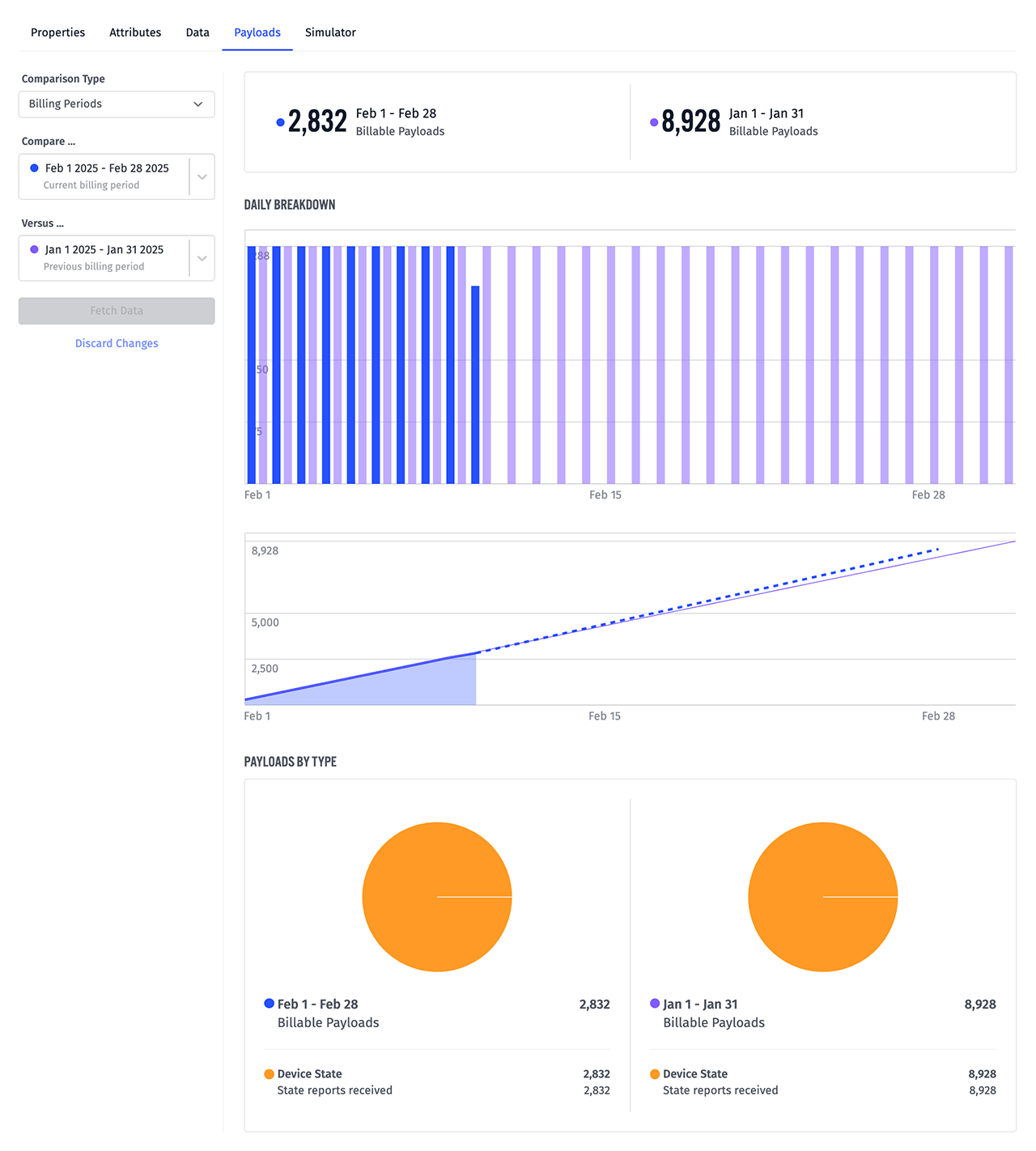Today's update brings even more visibility into your application's payload consumption through the new Payloads tab on the device details page. This release also updates the platform's root TLS certificate to ensure all certificates used by the platform remain as secure as possible.
Device Payload Usage Details
Over the past year we've been rolling out improved visibility into where payloads are consumed. In a continuation of that theme, today's update introduces the "Payloads" tab on the device details page.

This new tab makes it easy to find payloads that are attributable to actions against a specific device. The most common payload for a device is usually device state. However, things like custom MQTT topics , commands, and broker connection cycling can add up quickly and lead to unexpected usage.
If you're experiencing higher-than-expected payload usage, you can use this new tab to help investigate and address the underlying cause.
TLS Root Certificate Update
Back in May of 2024 we announced that the platform's root certificate is changing. This update is due to Mozilla's CA Certificate Program no longer trusting the DigiCert Global Root CA.
Today (February 11th, 2025) at 8:00pm EST, the platform is switching to certificates signed by DigiCert Global Root G2. To follow the progress of the update and know when the switch is complete, you can monitor the Losant Status Page.
Other Updates
As always, this release comes with several other features and improvements, including:
- The Instance Manager can now display aggregated usage details across all child organizations.
- The Allen-Bradley: Read and Allen-Bradley: Write Nodes now use an internal queueing mechanism to prevent overwhelming PLCs with requests. This queuing mechanism is now used by all edge PLC connectors.
- The performance of the Beckhoff: Read Node has been greatly improved.
- Autofill can now be disabled in the Beckhoff: Write Node. Autofill is most commonly used to toggle whether you can write a subset of fields in a struct. When autofill is enabled, any fields not provided in the write request will retain their current value. When autofill is disabled, you must provide values for every field or the request fails.
What’s Next?
With every new release, we listen to your feedback. By combining your suggestions with our roadmap, we can continue to improve the platform while maintaining its ease of use. Let us know what you think in the Losant Forums.
